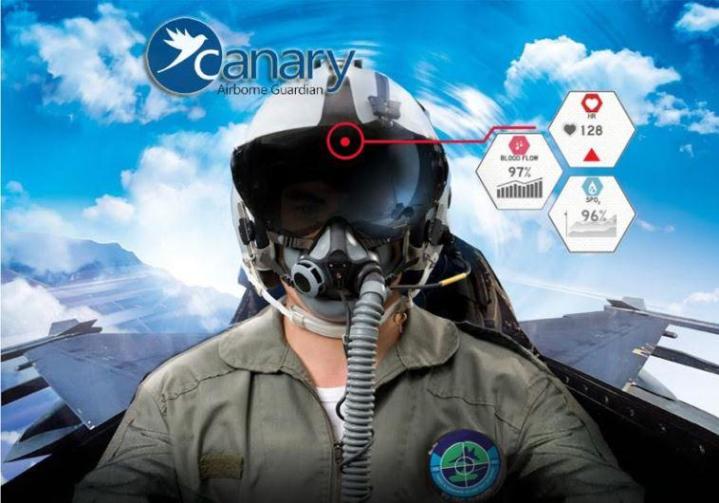
G-force induced loss of consciousness (GLOC) is a big issue for pilots, but unfortunately there are currently no onboard warning systems on jet fighters to warn the pilot if he is or she is falling into a GLOC state. Most of the helmet mounted displays that pilots wear are only capable of displaying flight/targeting information like altitude, air speed, weapon status, range, etc. — they’re generally not designed to show a pilot’s physiological conditions.
But that might not be the case for much longer. According to a recent report on Jerusalem Post, scientists from the Israeli defense company Elbit Systems have recently developed a new device that can be embedded in a pilot’s helmet and measure his/her vital signs in real time.
The device, called Canary Airborne Guardian System, can monitor things like oxygen levels, blood flow, and heart rate of the pilot in real time, and warn them in advance to take action if they are about to lose consciousness. If the pilot beingsto show signs of hypoxia or loss of consciousness, the system automatically issues a warning, which is projected on both the pilot’s helmet mounted display and on the aircraft’s console computer. In the event that these warnings aren’t enough and the pilot goes unconscious, the system can take over control of the plane and fly on auto pilot mode, keeping the pilot out of danger.
The device was developed with the help of the US Air Force Research Laboratory (AFRL) and Israeli start-up company LifeBeam . They company wants the device to be an alternative to the Digital Joint Helmet-Mounted Cuing System, which is currently used on a number of US Air Force fighter jets.
LifeBeam has mentioned that the Canary Airborne Guardian System has been a success in both ground and flight trials, and will go into production next year.


